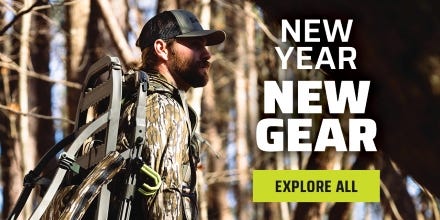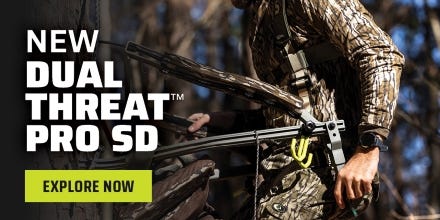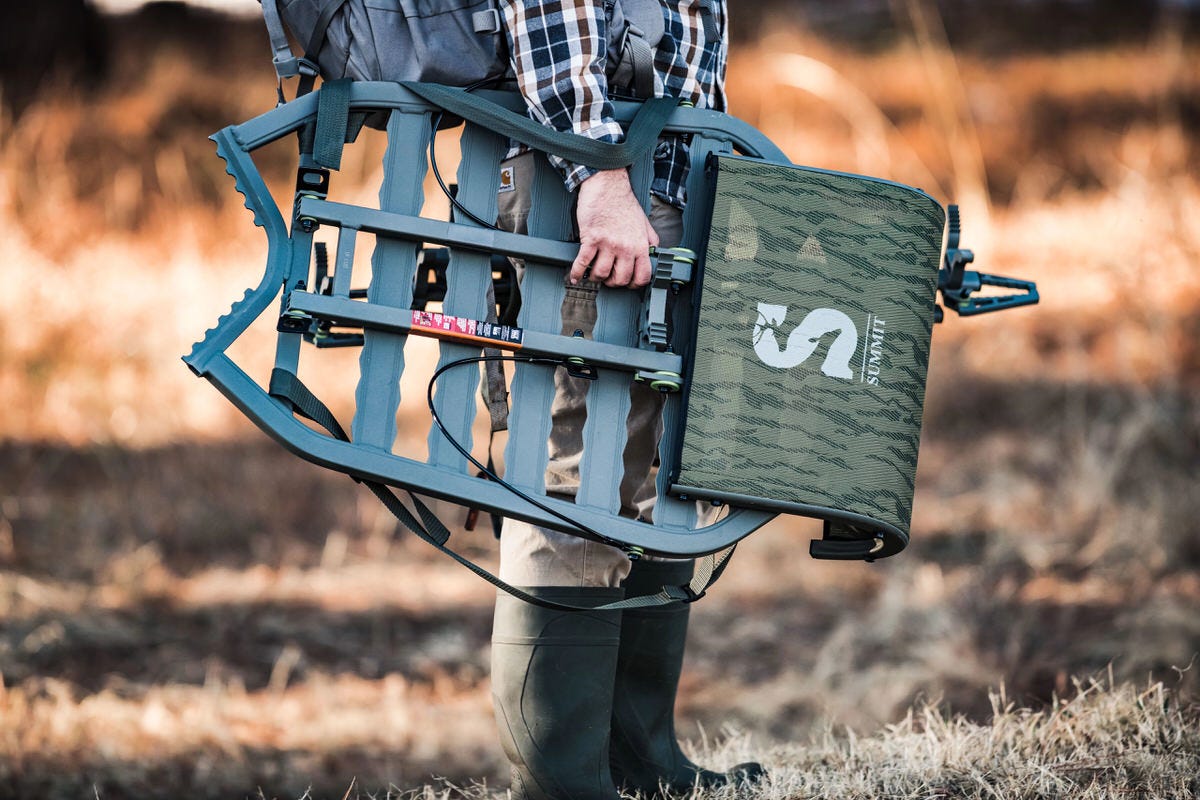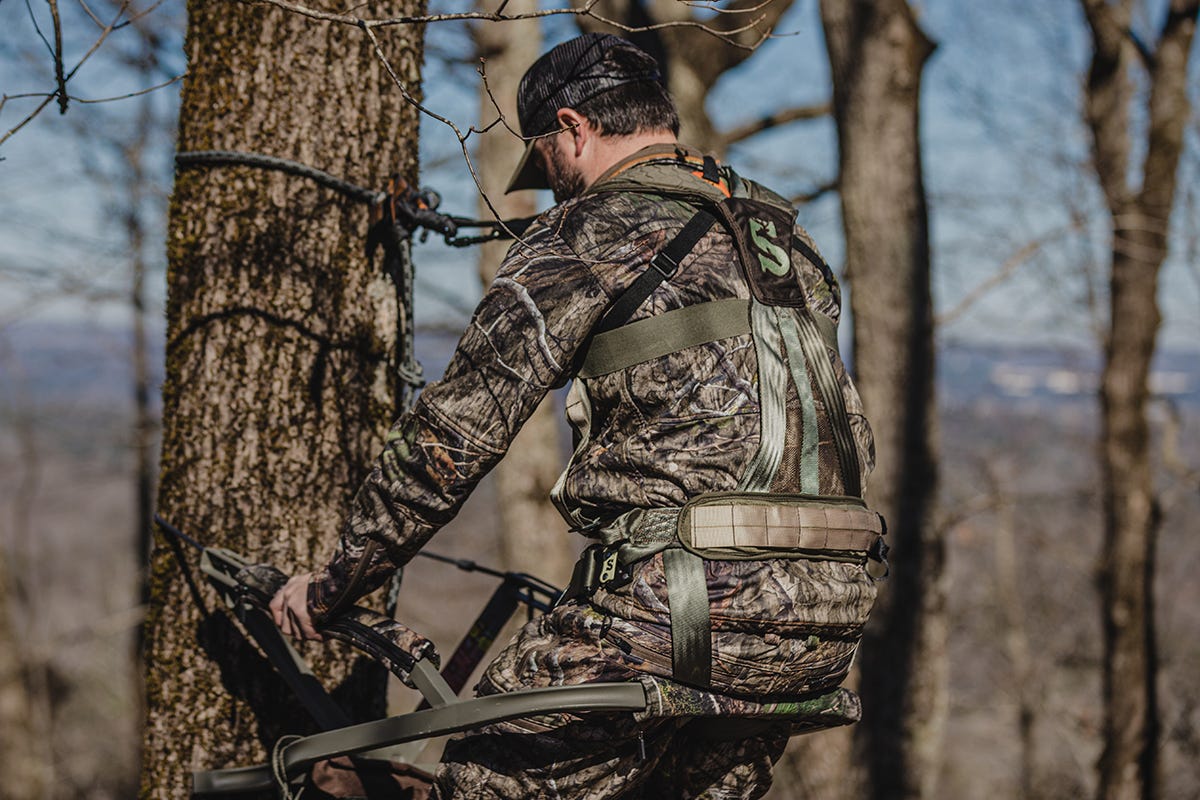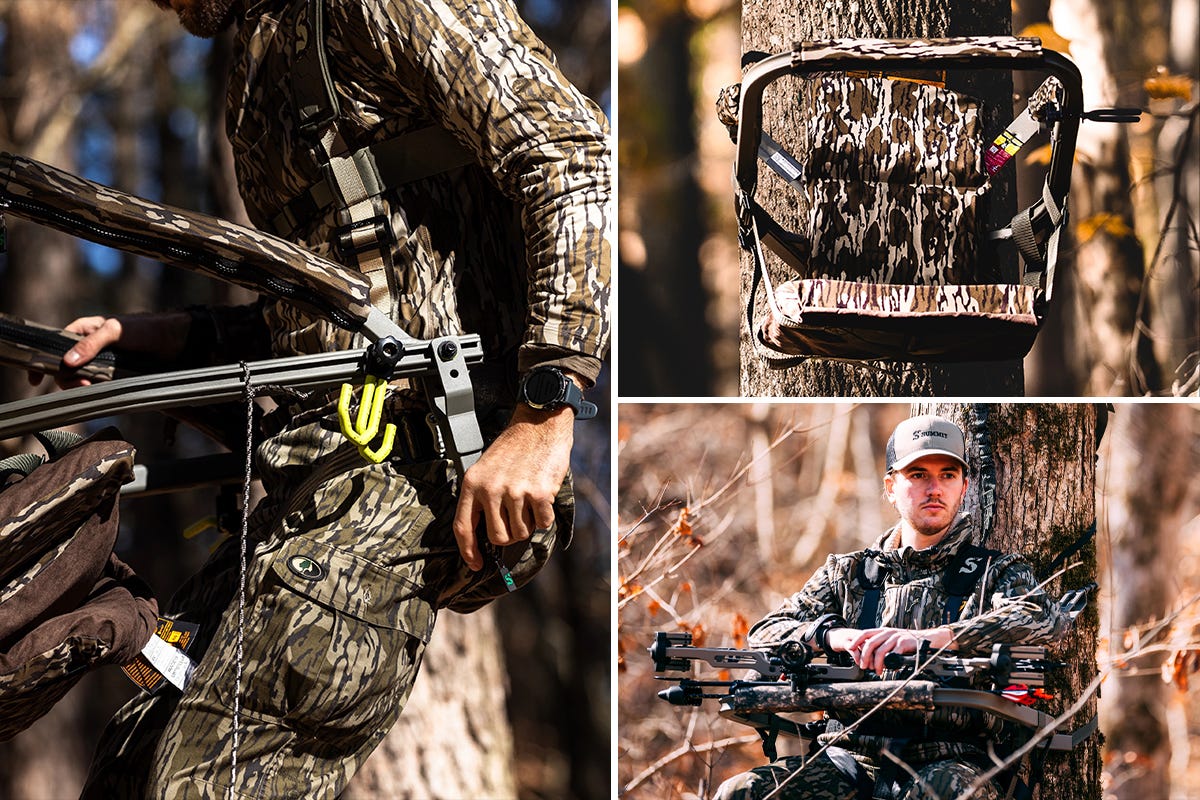- Nov 20, 2020
Treestand Buyer's Guide
Before You Buy a Tree Stand
At Summit Treestands, we are constantly striving to build the world's best tree stands. Every waking hour of our engineer's lives is devoted to the pursuit of the perfect tree stand. The truth about stands however is that there's no such thing. Stands, like fishing lures or game calls, are job specific — you wouldn't go deer hunting with duck calls now would you? Similarly hunters should equip themselves with the stands that were engineered and built to fit their specific needs.
One of the main considerations when shopping for a tree stand is the terrain. It's important to understand how far you'll be hiking to and from your stand location, and at what frequency you anticipate making stand location changes.
Understanding the predominant tree type in your hunting area also plays a role in finding the perfect tree stand for you. Certain tree characteristics like trunk size, straightness, and the height at which branches begin to shoot off the trunk should all factor into your decision.
Finally it's important to think about how you'll be transporting your stand to and from the hunting location. Portability and set up/take down time are very different from one stand type to the next, and will have a big impact on the way you're able to hunt.
Climbing Tree Stands
Climbing tree stands are all about mobility. This stand type allows the hunter to hike into any spot, find a suitable tree, and ascend it using the stand as a climbing mechanism to begin hunting almost immediately.
The climbing function is made possible by the two-piece chair and platform design. With the platform and chair secured around the tree, simply raise the upper portion, put your weight on it and draw your legs upward with your feet then "locked" into the lower platform. Then, out your weight onto the lower platform to secure it into the tree. Repeat the process — basically "inch worming" your way up the tree until to your desired hunting height.
While climbers excel in their portability over other stand types, before you run out to buy one, consider your terrain you will be hunting in. Because a climbing tree stand requires the stand be in constant contact with the tree all the way from the base of the tree's trunk up to the intended hunting height, it is extremely important the trees in your hunting terrain have no large low-level limbs. Limbs protruding from the trunk between the base of the tree and the intended hunting height make climbing impossible. If your hunting area has huge cottonwood or oak trees, you might not be able to wrap the climbing cable or strap around the tree, making it impossible to use a climber. But if your terrain allows a climber, they are without a doubt the quickest, and most simple way to hunt from a tree.
Hang-on tree stands
Hang-on tree stands are popular because of their versatility. Where other tree stand types may be limited by the size or shape of the tree, a Hang-on tree stand works well in nearly any type of tree. In addition to versatility, lock-on stands are generally quieter than other stand types, a necessity when animals are in super-close proximity. Because the stand is secured, tightly to the tree's trunk the lock-on stand tends to be less prone to noise cause by a hunter's shifting weight, decreasing untimely game-spooking clanks or groans that will surely set deer on a dead run to the next county.
Lock-on styles are also popular because of their lightweight. Many hang-on models are under 20 pounds, making for easy portability to and from the hunting spot. If long hikes and stand location changes are a regular part of your hunting routine, a stealthy climber may be the best option for your hunting style.
Since hang-ons don't have a built-in climbing function, like a ladder or climbing cables, climbing aids are necessary to get from the ground up to the stand location. Climbing Aids are relatively easy to install, quiet and can be carried with you when packing in. Some public hunting areas restrict the use of screw-in type steps, so strap-on steps or climbing sticks must be used.
Some hunters like to hunt one area in the morning and another in the evening. With a single hang-on stand, this becomes impractical unless it is designed to be used with multiple hanging brackets. Another solution would be multiple stands in different locations or the use of a climber if the terrain permits.
Ladder stands
For hunters who are more concerned about comfort and stability and don't care about weight, a ladder stand is just the ticket. Ladder stands have some advantages that the climber and fixed-position stands don't. With a ladder stand, as the name implies, is a fixed-position stand integrated into a ladder. This gives you an easy way to get up into your favorite tree without having to shimmy up the trunk, negotiating limbs and small branches, etc.
Ladder stands are nice because you can get a two-person stand and hunt with a child, friend or family member. Plus, you can find models with a shooting rail for a solid rest.
The biggest drawback to the ladder stand is its lack of portability. Since most ladder stands are made of steel and have an average weight of 45 pounds, they are for hunters who can are able to set up their stand and leave it for the remainder of the hunting season. Though ladders are certainly not ideal for hunters looking to make quick or frequent stand location changes, they are the most comfortable option when used over food plots or other areas you know deer will frequent.
Tripods
If your hunting location lacks trees or trees big enough for other style treestands, then you'll need another option. A tripod stand has been especially designed for these situations. In most cases, tripod stands sit on three or four legs and come with a platform and some have an enclosure to give you concealment from the elements and the eyes of a wary buck.
Tripod stands set up on three legs with a padded seat or "platform" that usually rotates 360 degrees for an unlimited field of view. Since they are bigger and more visible than other types of stands, it is important to place them well ahead of time so that animals will get used to them like any other structure.
Safety First
All Summit stands include a full-body safety harness. But keep in mind that four-point harness (Like the Summit Harness) is the best, and certainly most comfortable. Harnesses like the Summit full-body harnesses provides more movement, as well as a safer, more secure feel which equates to a more comfortable hunt.

